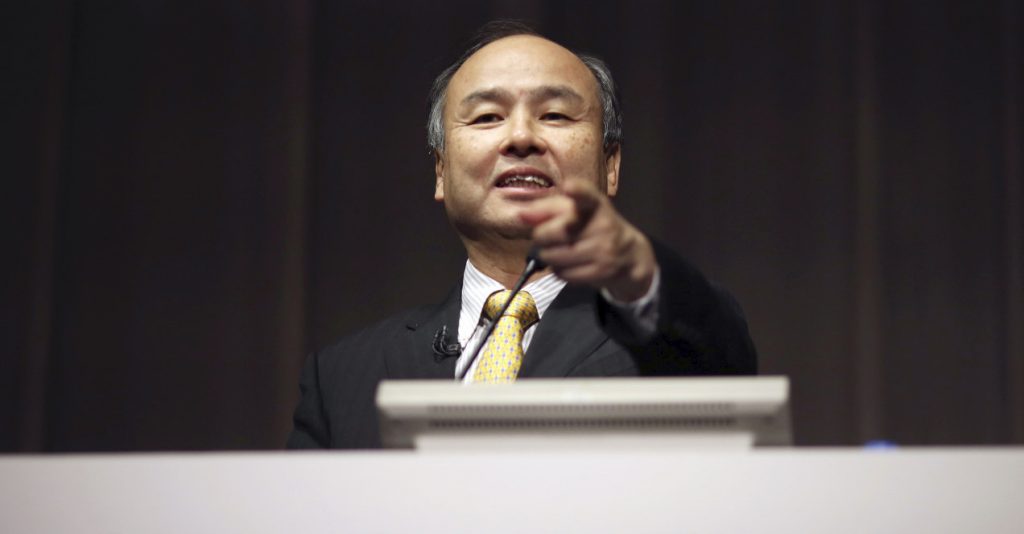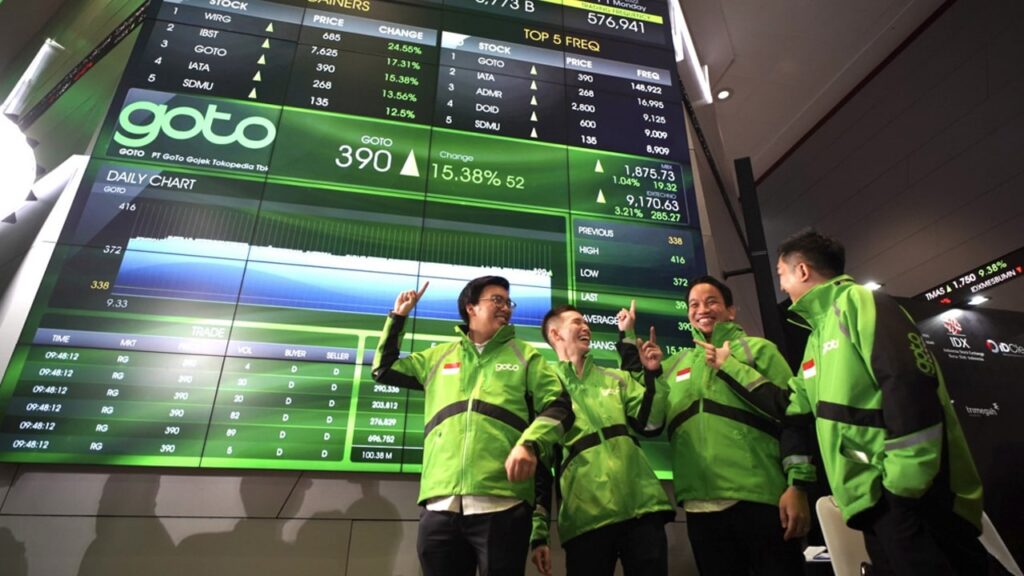When Grab Holdings, Southeast Asia’s largest ride-hailing operator, announced its first quarterly net profit last month, it was supposed to signal the company’s resurrection.
The USD 11 million profit in the three months to December 2023 was a milestone, the first time in the black since Grab’s founding over a decade ago, and up from a USD 391 million loss in the same period a year earlier. The company also announced its first-ever stock buyback plan of up to USD 500 million.
Anthony Tan, the company’s 42-year-old founder who launched Grab in 2012 and quickly became the face of the Southeast Asian startup boom, said 2023 was “pivotal” for his company. “We set out to achieve a number of big milestones, and we delivered on our key goals,” the CEO said during an earnings call with analysts on the day of the announcement, February 22.
But investors shrugged off the good news and sold Grab stock anyway. Grab fell over 8% by the end of the day, a casualty of a grinding “startup winter” that has fed a loss of confidence in the region’s high-flying tech funding market.
Since its public listing over two years ago, Grab’s share price has tumbled 70%, but the company is hardly alone in this respect. Grab’s Indonesian rival, GoTo, and another local e-commerce player, Bukalapak, are down around 80% since their public listings. There is no end in sight for the falling share prices amid fears that a number of Southeast Asia’s tech companies might not survive intact.

“It will take ten years, or maybe even longer, to see peak share prices return” to Southeast Asia’s listed startups, said Takeshi Ebihara, founding general partner of Singapore-based Rebright Partners. “Investors and tech firms must accept that they were growing during a rare bubble, one that we will not see in a few decades.”
Higher US interest rates have taken most of the blame for a global downturn in tech startups. However, Southeast Asia’s startup scene is notably linked to the fortunes of one institution in particular—Japanese tech conglomerate SoftBank Group—which scouted the region and grew many of its top tech companies, such as Grab and Tokopedia, the e-commerce unit of GoTo, almost from scratch.
After SoftBank Group saw its venture capital ambitions crippled amid the collapse of its Vision Fund—its venture capital arm with an initial fund of around USD 100 billion in capital—two years ago, many of the region’s most innovative companies have been left without a clear future.
Southeast Asia’s startup investment in the first quarter of this year fell to around USD 800 million as of March 18, dropping to the 2017 level when the Vision Fund was founded, according to investment data provider Preqin. As it becomes increasingly difficult to raise additional funds, the region’s startups will go through “shutdowns, mergers and downrounds [financings done at lower valuations than previously]” warned Prantik Mazumdar, an angel investor and the president of TiE Singapore, a global community of entrepreneurs.
From online shopping to transport to transferring money in a region where access to banking is limited, many corners of society have been digitally transformed over the past decade thanks to these startups, who have put growth ahead of profits, chasing more users with discounts and promotions for ride-hailing and food deliveries.
But as these companies’ money dried up and the market began to mature, regular users have also started to feel squeezed by ride-hailing and food delivery services that have become indispensable in their daily lives, with fares and platform fees steadily climbing in recent years. If the industry further consolidates resulting in fewer players, consumers could be left with fewer options.
Exposed
Nearly ten years have passed since Masayoshi Son, the billionaire chief executive and founder of SoftBank Group, started writing massive checks to young startups globally, fueling a startup boom and boasting that he was the “conductor of the AI revolution.”
Son’s appetite quickly brought him to the nascent Southeast Asian market, helping turn companies like Grab into the region’s tech darlings. In 2017, the Vision Fund, Son’s largest investment arsenal, was established and took over this investment activity.

However, the Vision Fund’s performance deteriorated sharply, and it started cutting back on investments around 2022, as other global tech investors also suffered due to the worldwide tech sell-off. According to a January KPMG report, global venture finance sharply declined after 2021, with deal value in the fourth quarter of last year standing at USD 74.9 billion, down 64% from its peak in the same quarter of 2021.
This has plunged the sector into a crisis from which only the strongest and most self-reliant companies might emerge. Startups the world over have been impacted by this funding winter, but investors say Southeast Asia’s nascent tech sector is particularly vulnerable.
“Southeast Asia has been heavily skewed towards consumer services,” said Rebright’s Ebihara. Unlike startups in the US or Israel that have advanced, cutting-edge technologies, he noted, many in the region have little or no means to differentiate themselves from their rivals. This inevitably leads to a funding race as companies aim for “growth at all costs,” he said.
“[Son] knew this better than anyone else, and this was exactly why he pumped more capital than what the companies had asked for,” Ebihara added. “But as soon as the economy and stock market make a 180-degree turn, these startups can no longer survive in such a race. This was particularly evident in Southeast Asia.”
The story of Singapore’s Grab illustrates this. The ride-hailing startup first received investment from SoftBank Group in 2014 and has since raised billions of dollars, including from the Vision Fund. Supported by massive funding, Grab expanded its ride-hailing and digital payment services into eight Southeast Asian countries. The company rapidly grew its market share by acquiring the local business of US-based Uber Technologies.
In written comments to Nikkei Asia, Grab’s Tan said Son “was a very important early investor in Grab, and without his early support, it’s nearly impossible to imagine we would be where we are today.” TiE Singapore’s Mazumdar said “if there isn’t Grab, many other startups would not be here.”
Grab made its Nasdaq debut in December 2021 as global tech stocks reached the end of a pandemic era boom and interest rates began to rise. As the stock slid, Grab co-founder Tan came under pressure from investors to switch his aggressive strategy from expanding market share to what he describes as “sustainable growth” and eventual profitability.
Grab is one of the Vision Fund’s many struggling Southeast Asian portfolio companies. Another prominent victim of the downturn is Indonesian e-commerce giant Tokopedia, which also raised hundreds of millions of dollars from the SoftBank Group and in 2021 merged with another ride-hailing giant, Gojek. The newly formed GoTo, which has become an icon of Indonesia’s startup scene, went public four months after its Singaporean rival Grab.
Like Grab, GoTo’s stock price has slumped since its April 2022 IPO, as the company keeps failing to achieve profitability. In January, TikTok, owned by China’s ByteDance, in which Vision Fund is a shareholder, acquired 75% of Tokopedia’s shares.
Since the deal with TikTok, “GoTo is actually in a much better position to improve its financials,” Jianggan Li, CEO of Singapore-based consultancy Momentum Works, said. The initial merger of Gojek and Tokopedia created a large business that was hard to manage, with nobody really in charge, he added. “[Now], with the reduced burden of having to run Tokopedia, GoTo’s management can have a much better focus, and a longer leeway, to make the rest of the business work,” Li said.
Pressure is mounting for Southeast Asian tech companies to restructure and consolidate as they fail to provide satisfactory returns to investors. Germany’s Delivery Hero, the parent of Grab’s food delivery rival Foodpanda, based in Singapore, has been negotiating to divest its Southeast Asian business in selected markets. The German company announced in February that negotiations had failed.
Last month, Grab and GoTo had reportedly restarted talks for a merger. Grab CFO Peter Oey said the company would not comment on rumors, adding that “organic growth is the highest priority for us.” In a company filing, GoTo denied that it was considering a merger.
Still, investors are expecting further consolidation in the region. “[A merger] would stop the price war between [Grab and GoTo],” and would “help to establish a more stable foundation for the technology industry,” said Alvin Cahyadi, vice president of investment at AC Ventures, an Indonesian venture capital firm.
Unicorns and golden eggs
“Not many investors globally recognized the potential of Southeast Asia’s startup ecosystem in the early 2010s and prior,” said Yinglan Tan, CEO of Singapore-based Insignia Ventures Partners. Limited amounts of money were being poured into early-stage startups, but those in the growth stage—when customer bases and income steadily expand—were underfunded, due to a lack of investors capable of making larger investments.
“So, credit to [Vision Fund], [it] recognized that this is actually a fairly big market with 600 million people,” said Chua Kee Lock, CEO of Vertex Holdings, one of Grab’s early investors. From Tokopedia in e-commerce to Grab and Gojek in ride-hailing, the first generation of Southeast Asian startups were able to take advantage of a gap in the market, when US tech giants like Amazon and Uber Technologies had yet to enter.

SoftBank Group made its foray into the region by targeting growth-stage companies. In October 2014, Tokopedia announced USD 100 million worth of funding led by SoftBank Group. Two months later, the Japanese group became Grab’s largest investor after committing USD 250 million.
Teruhide Sato, founder of Singapore-based venture capital firm Beenext, says Son went to Southeast Asia to replicate his China success story, as told by his investments in ride-hailing service Didi and e-commerce giant Alibaba. “SoftBank’s biggest achievement was to accelerate the growth of the region’s startup ecosystem, which was virtually nonexistent,” said Sato, an early investor in Tokopedia.
According to Preqin, Southeast Asia’s startup funding peaked in 2021 when investment deal value was more than 20 times where it was in 2014, the year SoftBank Group first invested in Tokopedia and Grab. Before the group’s arrival, Southeast Asia had been an uncharted market for venture capitalists.
With a rapid digital transformation due to the spread of smartphones and an expanding young population, and the apparent Midas touch of Son, the legendary investor behind global tech companies such as Yahoo and China’s Alibaba Group, the region suddenly attracted global attention.
This “changed the profile” of the startup ecosystem in the region, TiE Singapore’s Mazumdar said. “[SoftBank] started the wave.” As a result, investors from around the world began showing up with large sums of money for the region’s startups.
To keep up with SoftBank Group, prominent Western investors such as Sequoia Capital and Tiger Global Management poured vast sums of money into Southeast Asian startups, while those traditionally outside the venture capital space like Singaporean state investor Temasek Holdings and GIC raised their allocation to high growth tech companies. US tech giants such as Google and Microsoft, and Chinese tech companies such as Alibaba Group and Tencent, joined the boom.
According to data from US research firm CB Insights, Singapore in 2021 gave birth to 11 unicorns, unlisted companies whose value tops USD 1 billion. Unicorns were also born in Indonesia, Malaysia, Thailand, and Vietnam. “At that time, they all wanted to be introduced [to these mega funds],” Chua of Vertex said.
Guan Dian, co-founder of Singapore-based PatSnap, remembers in detail the company’s final pitch to Son, the “legendary guy” she had read and heard so much about. In March 2021, the patent database and analytics company became a unicorn after securing USD 300 million in a funding round led by the Vision Fund and Tencent.
Dian’s final meeting with Son was online during the Covid-19 pandemic. It ran longer than the originally allotted 30 minutes. “He said: ‘I had some success in the internet space with Alibaba, but I think I will have a bigger success in AI,'” Dian, whose company uses AI to analyze data, told Nikkei.
Despite arriving somewhat late, Son quickly joined to co-lead the round. From day one, the Vision Fund had told the PatSnap founders that [its] minimum check size was USD 100 million. “[The fund] indicated interest very quickly and moved very fast,” Dian said.
Though the investment was “more than what we asked for,” Dian added, the large funding allowed the company to focus on business operations without worrying about money.
PatSnap, which is already cash flow positive, was one of the region’s rare startups to have kept much of its funds in the bank, even after three years. It has no immediate need to raise additional funds.
Many startups that raised huge sums, particularly in 2021, used their funds to finance fast-paced growth strategies that tended to neglect profits. “They raised USD 100 million, used 40% on ads on platforms like Facebook and Google” to capture new users, Mazumdar at TiE Singapore said. Rather than sales obtained through advertising and promotions, startups should have been focusing on “quality revenue,” backed by organic growth, he added. VCs back then had “too much exuberance in execution and needed more people in due diligence and portfolio management,” Mazumdar told Nikkei.
Ebihara at Rebright Partners said SoftBank Group had fueled “hyperinflation” at bigger tech companies even years before the pandemic boom. “It is hard to deny that this has created some strain in the ecosystem,” he said, swelling the valuation of young, unprofitable companies.
Yet, SoftBank Group kept fueling the rush. In a Nikkei interview in May 2021, Son said his conglomerate wanted to more than double its Vision Fund’s global portfolio to 500 companies, bringing dozens to public markets every year. The billionaire described the Vision Fund’s business model as a “manufacturer of golden eggs.”
However, during this interview, Son warned that many of his portfolio companies are not making any profit. “It takes courage to invest there,” he said. “One wrong move, and you’re in the abyss.”
Exactly one year later, SoftBank Group ended up in that abyss. The Vision Fund’s investment performance deteriorated due to the global stock market decline, resulting in a net loss of JPY 1.7 trillion (USD 14.3 billion) for the fiscal year ending March 2022. The stock prices of Vision Fund’s listed portfolio companies, such as Grab, have slumped, and many have lost value. In August 2022, SoftBank Group reported a record net loss of JPY 3.16 trillion in the April to June quarter.
During a quarterly earnings announcement, Son said he would undertake “significant cost reductions” at the Vision Fund, including layoffs, and become more selective when making new investments. “The winter for unlisted unicorns will last much longer [than for listed ones],” he said.
“The thesis of the Vision Fund was visionary—and correct,” said Chua from Vertex. “You find the sector that is big enough, and find an entrepreneur or team that can capture to be the number one, give enough money to the person, support him or her to make it number one, and dominate the market.”
“I think the mistake … which a lot of people in this business make, is that [venture capital] is not a scalable business,” Chua added. “The issue is that it grew too fast.”
Road to recovery
In the past couple of years, Vision Fund’s investment activities have had to shift significantly. “A fundamental change in the market environment occurred, quite abruptly, in late 2021 and early 2022 that caused investors like ourselves and founders to change that mindset,” a Vision Fund executive told Nikkei Asia. Before that, the executive added, “growth was paramount” and “profitability was less of a priority.”
Kelvin Teo, CEO of Funding Societies, a Singapore-based digital lender, said the Vision Fund team has stood out from the rest of its investors since the Japanese group became a shareholder in early 2022. “When it comes to board meetings, [the Vision Fund is] the only team that will always turn up in person,” Teo, who messages and calls with the Vision Fund team “almost on a weekly basis,” told Nikkei.
Vision Fund said its Southeast Asian portfolios’ revenues are still growing overall, while margins have greatly improved because of the new focus on profitability. “There was a lot going on behind the scenes, but at the same time, we were always in the market,” the executive said.

Many regional investors and analysts believe Southeast Asia’s startup ecosystem will recover. “One positive outcome of the current phase of capital constraints is that for at least the next three to five years, newer startups will prioritize sustainable growth,” said Roshan Raj, a partner at tech consultancy Redseer Strategy Consultants.
Today, Vision Fund 1 has already deployed almost all its capital, while successor Vision Fund 2, funded mainly by SoftBank Group’s own balance sheet, is ready to crank up its investment activity — two years after Son spoke of the importance of strengthening its “defense.”
“We’re being more selective than before,” the Vision Fund executive said, “but are continuously looking for new investment opportunities.”
This article first appeared on Nikkei Asia. It has been republished here as part of 36Kr’s ongoing partnership with Nikkei.

